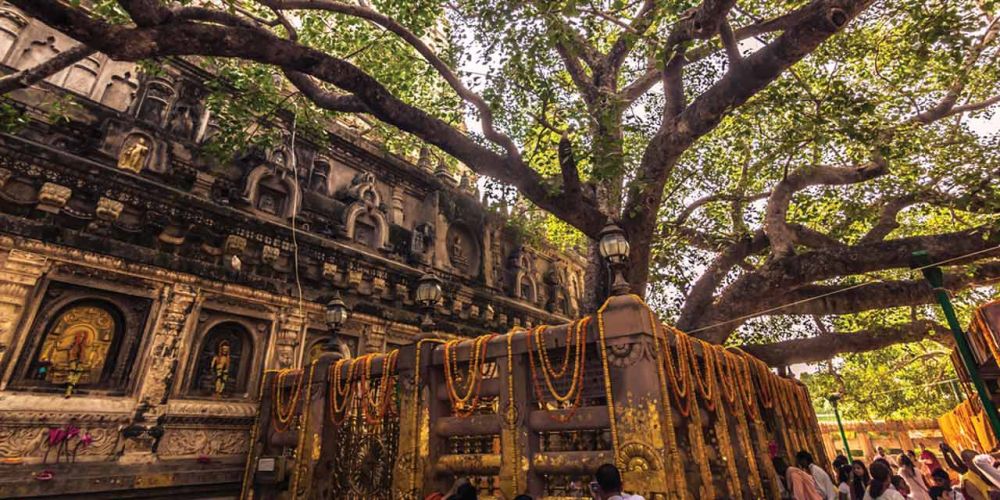

The Bodhi Tree in Bodh Gaya, Bihar, holds a significance that resonates beyond geographical boundaries, attracting visitors from across the globe who seek spiritual enlightenment, peace, and wisdom. The history of this sacred site is deeply intertwined with the life of Siddhartha Gautama, known as the Buddha, who attained enlightenment under this very tree and hence founded Buddhism. The spiritual magnetism of the Bodhi Tree has made Bodh Gaya a focal point of Buddhist pilgrimage and a testament to the cross-cultural footprint of Buddhist teachings.
It was approximately in the 6th century BCE when Prince Siddhartha, after years of ascetic life, sat under the Peepal tree and vowed not to rise until he had found the truth. This tree came to be known as the Bodhi Tree, or the "Tree of Awakening." His quest culminated in enlightenment, and the place was henceforth known as Bodh Gaya. Ashoka the Great, the Mauryan emperor who converted to Buddhism, is said to have visited Bodh Gaya in the 3rd century BCE and established the site as a pilgrimage destination by constructing the original Mahabodhi Temple.
Throughout the centuries, Bodh Gaya has seen waves of visitors that include monks, scholars, and general tourists. The temple complex that surrounds the Bodhi Tree was often renovated and expanded upon by subsequent dynasties. However, it was with the British colonial rule and exploration during the 19th century that Bodh Gaya once again surfaced in global awareness. Restoration efforts, archeological studies, and historical reverence all contributed to the renaissance of Bodh Gaya as a prominent destination for both religious tourism and heritage appreciation.
Today, Bodh Gaya is recognized as a UNESCO World Heritage Site, symbolic of universal peace and resilience of the human spirit. Each year, millions of pilgrims, especially during the Mahabodhi Festival, flock to this sacred grove to meditate, pray, and study. Rituals such as chanting, meditating, and circling the Mahabodhi Temple are common practices among visitors. The town of Bodh Gaya has adapted to accommodate international travellers, with infrastructure that includes meditation centers, international cuisine, and a variety of accommodations.
A new trend is the rise of “voluntourism†where tourists engage in volunteer work to give back to the local community while deepening their personal experiences. Additionally, the digital age has brought about virtual tours and interactive online experiences for those unable to travel physically, enabling a broader audience to explore the serenity of the Bodhi Tree.
Recognizing the importance of preserving the spiritual and ecological integrity of the Bodhi Tree and its surroundings, both local authorities and international groups are actively engaged in sustainable tourism practices. Efforts include regulating visitor influx, using eco-friendly materials and practices within the temple complex, promoting local arts and crafts, and educating tourists on respecting the site's sanctity. This sustainable ethos ensures that the Bodhi Tree remains a beacon of wisdom and tranquility for future generations.
The Bodhi Tree in Bodh Gaya is not just a testament to historical religious significance; it is a living symbol of enlightenment ideals and a constant inspiration for seekers of truth. The evolution of tourism in Bodh Gaya, from a simple pilgrimage site to a multi-faceted destination with global appeal, highlights humanity's enduring quest for meaning and the universal nature of Buddhist philosophy.